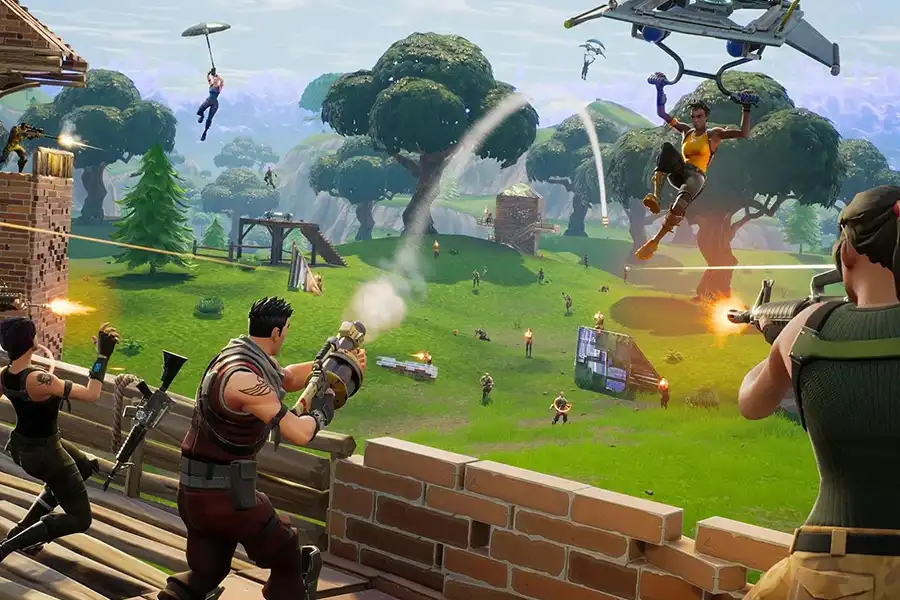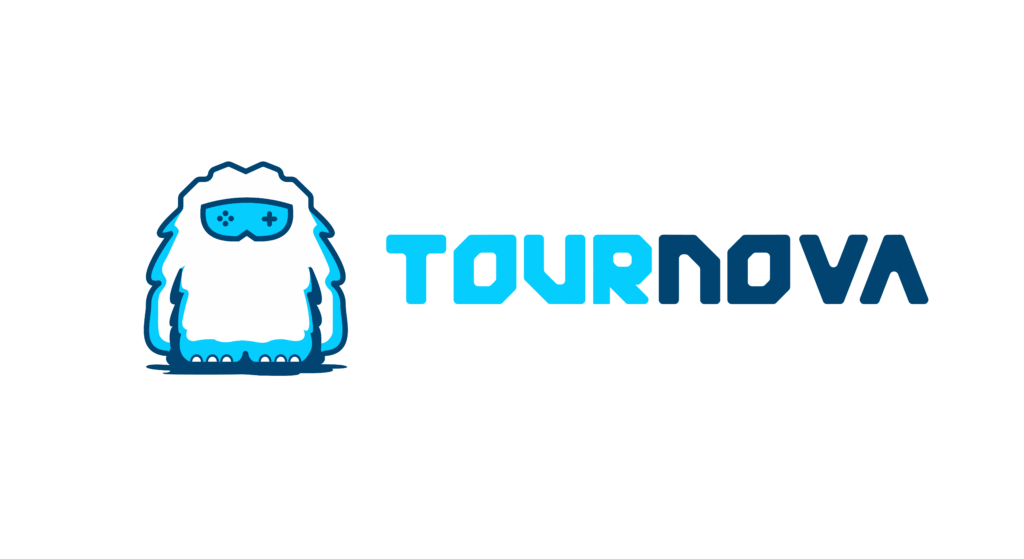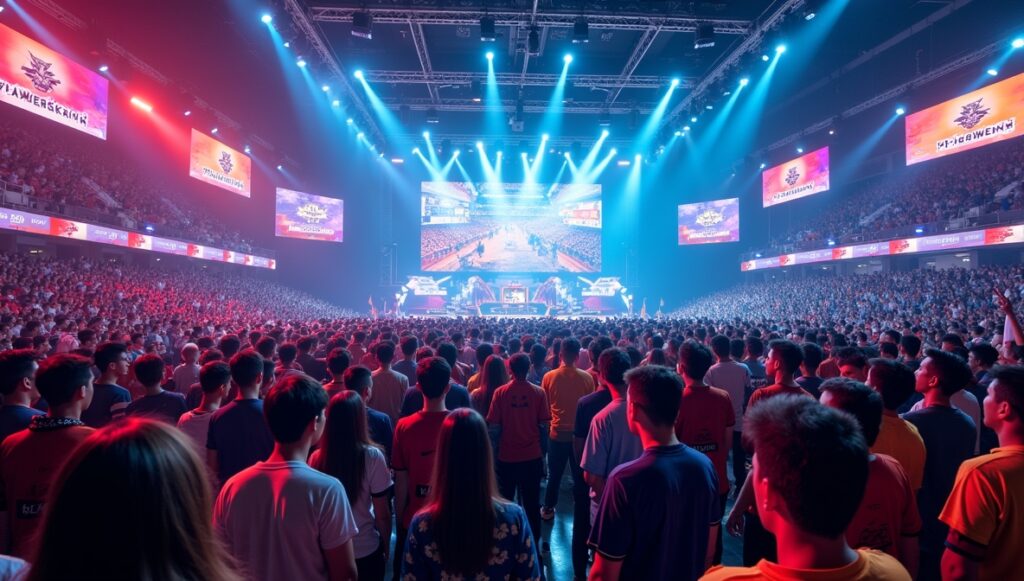Have you ever felt lost trying to navigate the Fortnite rank distribution system? You’re not alone. Many players struggle to understand how ranks are determined and what they mean for their in-game experience. This can create frustration, especially when assessing progress or competing fairly. But fear not! We’re here to break down Fortnite’s rank distribution and point system, offering you clarity and practical insights. Whether you’re a newcomer setting up your friendly tournament or a seasoned player looking to up your game, we’ve got you covered with this comprehensive guide.

How Does Fortnite’s Ranking System Work?
At the heart of Fortnite’s competitive play lies the ranking system, designed to balance fairness and competitiveness. The system ranks players based on their skill level, ensuring that matches are intense yet fair. Simply put, it groups players so that newcomers aren’t pit against seasoned pros, and each match is a thrilling test of skill.
This ranking structure not only makes the game enjoyable but also encourages improvement. Every player has a clear progression path with ranks ranging from Bronze to Unreal. By understanding where you stand, you can set realistic goals and measure your growth over time.
Understanding Fortnite’s Rank Levels and Tiers
Fortnite rank distribution levels are divided into several tiers, each reflecting a different level of mastery and skill. The journey begins with Bronze, designed for beginners finding their footing. As players hone their skills, they advance to Silver, then Gold, and beyond. Each tier represents a milestone, boasting a unique set of challenges and requirements.
At the higher end of the spectrum lies the Unreal rank, reserved for the game’s elite. Achieving this rank is a testament to dedication, strategy, and skill. Each player’s progression through these tiers is a story of perseverance, filled with triumphs and tribulations.

Fortnite Point System Explained: How to Climb the Ranks
The journey up Fortnite’s competitive ladder is intricately tied to its point system, which serves as the backbone of your progression within the game. Points are awarded based on various in-game actions, each contributing differently to your overall rank. Understanding how these points work is crucial for anyone serious about climbing the ranks.
Accumulating Points Through Gameplay
Points in Fortnite are primarily earned through three key actions: eliminations, survival, and game placement. Each of these elements contributes to your ranking in unique ways:
- Eliminations: Engaging in combat and successfully eliminating opponents can earn you significant points. This aspect rewards aggressive and skilled players who can outmaneuver and outgun their foes. However, focusing solely on eliminations can sometimes leave players vulnerable in the game’s later stages.
- Survival: Staying alive longer in a match benefits players with survival points. This strategy encourages thoughtful play and strategic movements, such as choosing when to engage in combat or when to retreat. Survival points reward players who can navigate the map effectively and avoid unnecessary confrontations.
- Game Placement: Reaching the end-game, regardless of eliminations, awards players with placement points. This encourages players to focus on the long-term strategy of a match—deciding when to hide when to fight, and when to make a move. High placement can sometimes outweigh the number of eliminations in terms of total points gained.
Balancing Strategies for Maximum Points
Successfully climbing ranks requires balancing these points-earning strategies when discussing Fortnite rank distribution. While some matches might call for aggressive eliminations, others might benefit more from a cautious approach focused on survival and placement. Being adaptable is key. Knowing when to switch strategies based on the dynamics of each match can turn the tides in your favor.
Moreover, earning a consistent number of points across matches is crucial. A few high-scoring matches will help, but maintaining a steady upward trend through consistent point earnings ensures long-term progression. Tracking your performance and being mindful of the mistakes leading to early elimination can help refine your skills.

Battle Royale vs. Zero Build
Fortnite’s Ranked Mode is unique due to its inclusion of different game modes, each offering a fresh twist on gameplay and strategic decisions. Understanding the nuances of these modes can significantly impact your ranking journey:
Battle Royale Mode
This is Fortnite’s quintessential experience, where traditional building mechanics come into play. In Battle Royale, mastering the art of quick building is essential. Whether constructing rapid cover during firefights or using elevation to gain an advantage, this mode demands a fine balance of combat skills and construction strategies.
Players who excel in this mode are often proficient in multitasking, quickly swapping between building and shooting. Learning to build under pressure can dramatically enhance your defensive and offensive capabilities, opening up new strategic possibilities during matches, which can help you climb the ladder in Fortnite rank distribution.
Zero Build Mode
Zero Build Mode offers an enticing alternative for those who prefer combat over construction. This mode removes the building aspect, emphasizing shooting accuracy, positioning, and map awareness. Players must rely on natural terrain for cover and anticipate enemy movements without the safety net of built structures.
Success in Zero Build often depends on mastering weapon mechanics and understanding the map’s geography. Players gravitate toward this mode if they enjoy traditional shooter mechanics without the complexity of building, allowing them to focus solely on combat strategy.

Choosing Your Mode
Deciding between Battle Royale and Zero Build can depend on personal strengths and preferences. Understanding your play style is key—whether you lean towards strategic building or straight-up gunplay. Some players prefer to rotate between modes to keep their gameplay experience dynamic and hone various skills. Regardless of choice, each mode presents unique challenges and opportunities to climb the ranks.
Read More: How to Calculate MMR in DOTA 2
Where Do Most Players Stand?
Curious about where you stack up against the global player base? Most Fortnite players find themselves within the Silver and Gold tiers, reflecting a wide range of skilled competitors. However, only a select few manage to reach the esteemed Unreal rank, a testament to their formidable skills and tenacity.
Understanding Fortnite rank distribution offers perspective on your own standing and can motivate a push toward higher tiers. It reveals the competitive landscape and helps frame personal goals in a broader context.
How Often Does Fortnite’s Ranked System Reset?
Rank resets are an essential aspect of Fortnite’s competitive ecosystem. Scheduled to occur periodically, they reset player ranks, ensuring fresh starts and renewed challenges. These resets keep the competition dynamic, giving players the chance to reevaluate strategies and set new objectives.
Importantly, resets also shake up rank distribution, leveling the playing field and allowing emerging talents to surface. This cyclical process injects excitement and keeps players engaged season after season.
Tips to Rank Up Fast in Fortnite
Climbing the ranks in Fortnite rank distribution requires more than just skill—it demands strategic thinking, adaptability, and dedication. Here are some effective tips to help you ascend the competitive ladder faster:
- Master the Basics:
- Game Mechanics: Take the time to thoroughly learn the game’s mechanics, including shooting, building, and movement. Understanding how different weapons work and how building materials interact with the environment can give you an edge over less knowledgeable opponents.
- Controls: Customize your control settings to suit your style, ensuring quick responses during intense moments. Whether you’re on a controller or a keyboard and mouse, having intuitive bindings can make all the difference.
- Adapt Your Playstyle:
- Mode Choice: Select the game mode that aligns with your strengths—Battle Royale for those who excel with strategy and building, and Zero Build for players who prefer pure shooting prowess.
- Hone Your Strategies: Develop and practice specific strategies for different phases of the game, such as landing locations, mid-game rotations, and end-game tactics. Being flexible and willing to adjust your tactics based on your opponents and the situation is key to success.

- Consistency Over Intensity:
- Regular Play Sessions: Instead of relying solely on long, intensive gaming sessions, engage in consistent, shorter playtimes to enhance your skills gradually. Regular practice helps you maintain a steady improvement curve, avoiding burnout and enabling you to refine your abilities over time.
- Review and Analyze:
- Watch Replays: Utilize Fortnite’s replay feature to watch your past games. Pay attention to your decision-making process, positioning, and combat engagements. Noticing patterns in your wins and losses will help you identify strengths to build on and weaknesses to address.
- Learn from Mistakes: Pinpoint specific mistakes, like poor engagement choices or bad rotations, and focus on not repeating them. This self-analysis loop is crucial for developing a deeper understanding of the game.
- Stay Informed and Updated:
- Patch Notes and Meta Changes: Fortnite is constantly evolving, with regular updates that can shift the game’s dynamics. Stay informed about patch notes and meta changes so you can adapt your strategies accordingly. Being aware of the most effective weapons, building techniques, and viable strategies can give you a significant advantage.
- Engage with the Community:
- Learn from Others: Watch streams, read guides, and engage with the community to learn new techniques and strategies. Understanding how top players approach the game can provide insights that you can incorporate into your gameplay.
- Join a Community: Being part of a clan or gaming community can provide support, additional resources, and a network of players to learn from and play with, making the learning process more interactive and enjoyable.
By focusing on these areas in Fortnite rank distribution, you can steadily enhance your gameplay, increase your ranking, and ultimately enjoy a richer, more competitive Fortnite experience. Remember, the journey is as important as the destination, so enjoy the process of improvement!

Rewards in Ranked Mode: What’s Up for Grabs?
The competitive effort in Fortnite’s Ranked Mode does not go unrewarded. Players can earn a variety of rewards, from unique in-game cosmetics to badges that showcase their skill and dedication. These rewards are often tied to the season’s performance, adding both motivation and prestige to rank progression.
While cosmetic items offer aesthetic appeal, the true reward lies in the bragging rights and satisfaction of climbing through the ranks. Each achievement symbolizes perseverance and mastery, a testament to a player’s journey in Fortnite.
Read More: PUBG mobile point system 2025
Conclusion
Embarking on the journey through Fortnite rank distribution is as thrilling as it is challenging. By understanding and mastering the nuances of the ranking and point system, players can hone their skills, set challenging goals, and ultimately enjoy the competitive spirit that Fortnite champions. Whether you’re arranging a friendly tournament or seeking personal growth, the vibrant world of Fortnite esports awaits. Happy gaming!
Read the hottest in-depth Esports Guides on Tournova.
FAQs
What strategies work best in Zero Build mode?
In Zero Build mode, focus on positioning and aim. Use natural cover effectively and prioritize high-ground advantage to dominate opponents.
Are rank resets the same as seasonal updates?
Rank resets usually coincide with seasonal updates, but they specifically affect player rankings and competitive balance, while seasonal updates include new content and gameplay changes.
Can solo players compete effectively, or is it better to form teams?
Solo players can thrive, especially in modes that highlight individual skills. However, forming teams can provide strategic advantages and often introduce new dynamics that enhance gameplay.










